-
 Bitcoin
Bitcoin $107,810.8710
-1.45% -
 Ethereum
Ethereum $2,531.4386
-1.75% -
 Tether USDt
Tether USDt $1.0000
-0.03% -
 XRP
XRP $2.2542
-0.99% -
 BNB
BNB $659.1350
-0.50% -
 Solana
Solana $148.5456
-2.40% -
 USDC
USDC $0.9999
-0.02% -
 TRON
TRON $0.2868
-0.44% -
 Dogecoin
Dogecoin $0.1666
-3.65% -
 Cardano
Cardano $0.5751
-2.36% -
 Hyperliquid
Hyperliquid $37.6845
-5.51% -
 Bitcoin Cash
Bitcoin Cash $494.9448
-0.65% -
 Sui
Sui $2.8396
-3.31% -
 Chainlink
Chainlink $13.2423
-2.59% -
 UNUS SED LEO
UNUS SED LEO $9.0482
0.02% -
 Stellar
Stellar $0.2467
-2.44% -
 Avalanche
Avalanche $17.8165
-3.63% -
 Shiba Inu
Shiba Inu $0.0...01158
-2.41% -
 Toncoin
Toncoin $2.7397
-3.42% -
 Hedera
Hedera $0.1560
-2.73% -
 Litecoin
Litecoin $85.8559
-2.34% -
 Monero
Monero $315.3710
-2.30% -
 Dai
Dai $1.0001
0.00% -
 Polkadot
Polkadot $3.3443
-2.03% -
 Ethena USDe
Ethena USDe $1.0001
0.01% -
 Bitget Token
Bitget Token $4.2888
-3.73% -
 Uniswap
Uniswap $7.3388
-1.57% -
 Aave
Aave $278.2986
-3.05% -
 Pepe
Pepe $0.0...09807
-3.67% -
 Pi
Pi $0.4563
-2.39%
What is the withdrawal fee of BitFlyer?
BitFlyer's withdrawal fees: BTC (0.0004 BTC), ETH (0.005 ETH), LTC (0.001 LTC), BCH (0.0005 BCH). Fees may vary; check the latest on their site.
Apr 17, 2025 at 08:42 am
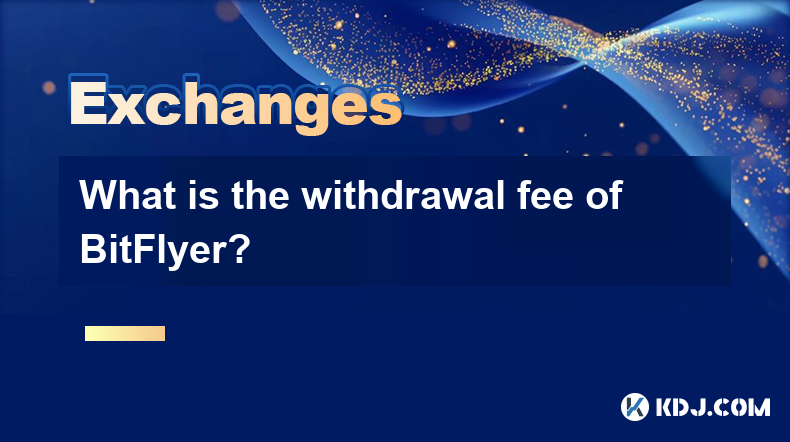
What is the withdrawal fee of BitFlyer?
BitFlyer is a prominent cryptocurrency exchange based in Japan, known for its robust trading platform and extensive user base. One of the critical aspects that users consider when choosing an exchange is the withdrawal fee structure. In this article, we will delve into the specifics of BitFlyer's withdrawal fees, providing a comprehensive understanding of what users can expect when they decide to move their funds from the platform.
Understanding BitFlyer's Withdrawal Fees
Withdrawal fees on BitFlyer vary depending on the type of cryptocurrency being withdrawn. It's essential to understand that these fees are subject to change, and users should always check the latest fee structure on BitFlyer's official website. Below, we outline the withdrawal fees for some of the most commonly traded cryptocurrencies on BitFlyer.
Bitcoin (BTC): The withdrawal fee for Bitcoin is typically around 0.0004 BTC per transaction. This fee is competitive compared to other major exchanges and reflects BitFlyer's commitment to keeping costs low for users.
Ethereum (ETH): For Ethereum withdrawals, BitFlyer charges a fee of approximately 0.005 ETH per transaction. This fee is also in line with industry standards and ensures that users can move their Ethereum funds efficiently.
Litecoin (LTC): The withdrawal fee for Litecoin is around 0.001 LTC per transaction. This fee is relatively low, making Litecoin withdrawals cost-effective for users.
Bitcoin Cash (BCH): For Bitcoin Cash withdrawals, the fee is typically 0.0005 BCH per transaction. This fee structure is designed to facilitate smooth withdrawals without imposing a significant cost on users.
Factors Influencing Withdrawal Fees
Several factors can influence the withdrawal fees on BitFlyer. Understanding these factors can help users make informed decisions about when and how to withdraw their funds.
Network Congestion: During periods of high network congestion, the fees for withdrawing cryptocurrencies can increase. This is because miners prioritize transactions with higher fees, leading to longer processing times for transactions with lower fees.
Transaction Size: The size of the transaction, in terms of the number of bytes it occupies on the blockchain, can also affect the withdrawal fee. Larger transactions typically incur higher fees.
Exchange Policy: BitFlyer, like other exchanges, may adjust its fee structure based on various internal policies and market conditions. Users should stay updated on any changes to the fee structure to avoid unexpected costs.
How to Withdraw Funds from BitFlyer
Withdrawing funds from BitFlyer is a straightforward process, but it's crucial to follow the steps carefully to ensure a smooth transaction. Here's a detailed guide on how to withdraw funds from your BitFlyer account:
Log into Your BitFlyer Account: Start by logging into your BitFlyer account using your credentials.
Navigate to the Withdrawal Section: Once logged in, go to the "Withdraw" or "Send" section of the platform. This section is usually found under the "Wallet" or "Funds" tab.
Select the Cryptocurrency: Choose the cryptocurrency you wish to withdraw from the list of available options.
Enter the Withdrawal Address: Input the destination address where you want to send the funds. Ensure that the address is correct, as transactions on the blockchain are irreversible.
Specify the Amount: Enter the amount of cryptocurrency you wish to withdraw. Be mindful of the minimum withdrawal amount, if any, and the withdrawal fee.
Review and Confirm: Review all the details of your withdrawal, including the destination address and the amount. Once you are satisfied, confirm the withdrawal.
Wait for Confirmation: After confirming the withdrawal, you will need to wait for the transaction to be processed and confirmed on the blockchain. This can take anywhere from a few minutes to several hours, depending on network conditions.
Comparing BitFlyer's Withdrawal Fees with Other Exchanges
To provide a broader perspective, it's helpful to compare BitFlyer's withdrawal fees with those of other popular cryptocurrency exchanges. This comparison can help users determine if BitFlyer offers competitive fees.
Binance: Binance, one of the largest exchanges globally, charges a withdrawal fee of 0.0005 BTC for Bitcoin, which is slightly higher than BitFlyer's fee of 0.0004 BTC. For Ethereum, Binance charges 0.006 ETH, compared to BitFlyer's 0.005 ETH.
Coinbase: Coinbase, a well-known exchange in the United States, has a withdrawal fee of 0.0002 BTC for Bitcoin, which is lower than BitFlyer's fee. However, for Ethereum, Coinbase charges 0.01 ETH, which is significantly higher than BitFlyer's fee.
Kraken: Kraken's withdrawal fee for Bitcoin is 0.0005 BTC, slightly higher than BitFlyer's fee. For Ethereum, Kraken charges 0.005 ETH, which is the same as BitFlyer's fee.
Tips for Minimizing Withdrawal Fees on BitFlyer
While BitFlyer's withdrawal fees are competitive, users can take certain steps to minimize these costs further. Here are some practical tips:
Batch Withdrawals: Instead of making frequent small withdrawals, consider batching your withdrawals. This can help reduce the overall fee you pay, as you'll be making fewer transactions.
Monitor Network Conditions: Keep an eye on the network conditions of the blockchain you're using. During periods of low congestion, you might be able to withdraw your funds with lower fees.
Use the Right Address: Always use the correct withdrawal address to avoid any potential issues or delays that could lead to additional costs.
Stay Informed: Regularly check BitFlyer's official website and user forums for any updates on fee structures. Being informed can help you plan your withdrawals more effectively.
Frequently Asked Questions
Q: How often does BitFlyer update its withdrawal fees?
A: BitFlyer updates its withdrawal fees periodically based on market conditions and internal policies. Users should check the official website for the most current fee structure.
Q: Can I withdraw funds to a different cryptocurrency wallet?
A: Yes, you can withdraw funds to any compatible cryptocurrency wallet by providing the correct withdrawal address.
Q: Are there any minimum withdrawal amounts on BitFlyer?
A: Yes, BitFlyer has minimum withdrawal amounts for each cryptocurrency. These amounts can vary, so users should check the specific requirements before initiating a withdrawal.
Q: How long does it take to process a withdrawal on BitFlyer?
A: The processing time for withdrawals on BitFlyer can vary depending on network conditions. Typically, it can take anywhere from a few minutes to several hours for a withdrawal to be confirmed on the blockchain.
Disclaimer:info@kdj.com
The information provided is not trading advice. kdj.com does not assume any responsibility for any investments made based on the information provided in this article. Cryptocurrencies are highly volatile and it is highly recommended that you invest with caution after thorough research!
If you believe that the content used on this website infringes your copyright, please contact us immediately (info@kdj.com) and we will delete it promptly.
- BlockDAG Leads the Web3 Race with Sports Partnerships and Strategic Pricing
- 2025-07-08 10:50:12
- Pepe, Dogecoin, Shiba Inu: Meme Coin Mania or Calculated Crypto?
- 2025-07-08 10:30:12
- Bitcoin, Ethereum, and Tariff Tussles: Decoding the Crypto Market's Latest Moves
- 2025-07-08 10:30:12
- PEPE, AVAX, Technical Analysis: Riding the Crypto Wave
- 2025-07-08 11:10:12
- BTC Whale's $8.6B Move: Hack, Transfer, or Just a FUD Panic?
- 2025-07-08 11:10:12
- Bitcoin, Treasuries, and the Surge: What's Driving the Market?
- 2025-07-08 11:15:11
Related knowledge
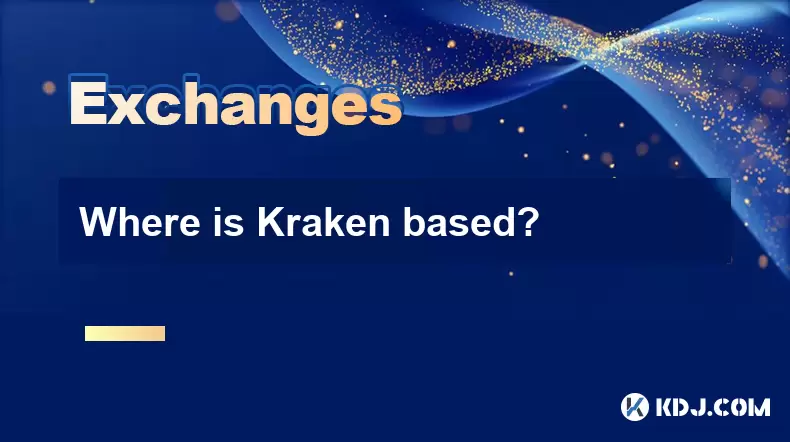
Where is Kraken based?
Jul 08,2025 at 12:00pm
What is Kraken?Kraken is one of the most established and trusted cryptocurrency exchanges in the world. Founded in 2011, it has grown to become a go-to platform for traders seeking reliability, security, and advanced trading tools. The exchange supports a wide variety of cryptocurrencies, including Bitcoin (BTC), Ethereum (ETH), Litecoin (LTC), and many...
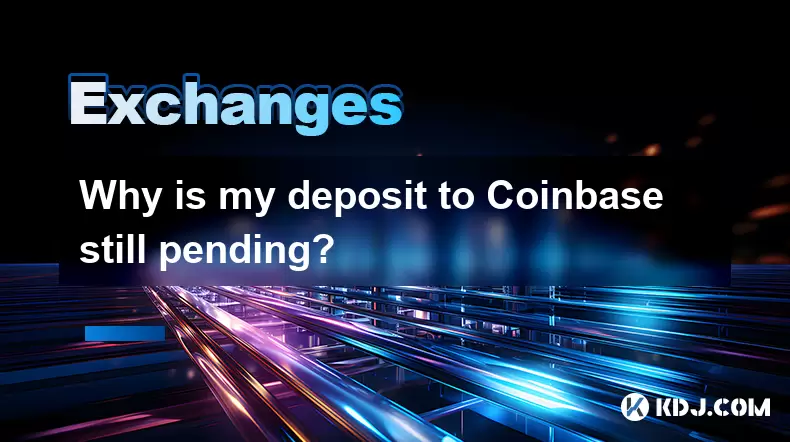
Why is my deposit to Coinbase still pending?
Jul 08,2025 at 11:14am
Understanding Pending Deposits on CoinbaseIf you've initiated a deposit to your Coinbase account and it's showing as pending, there could be several reasons behind this status. A pending deposit typically means that the transaction has been broadcasted or initiated but hasn't yet received enough confirmations from the blockchain network to be finalized....
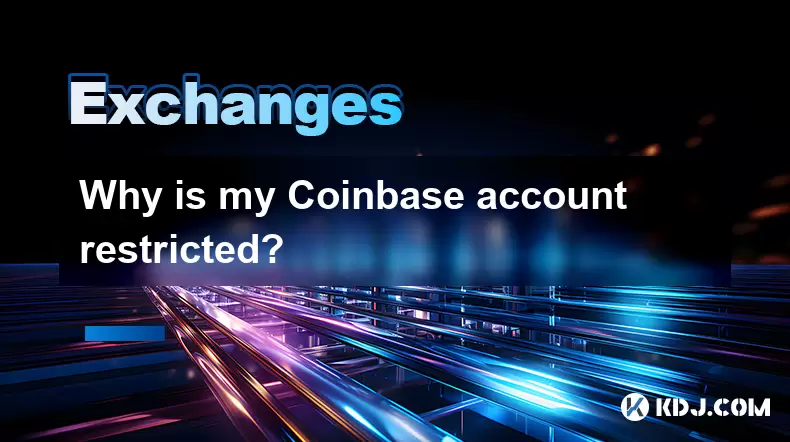
Why is my Coinbase account restricted?
Jul 08,2025 at 11:01am
Account Verification and Identity RequirementsOne of the most common reasons a Coinbase account becomes restricted is due to incomplete or unverified identity information. Coinbase requires users to complete Know Your Customer (KYC) procedures, which include submitting government-issued identification documents, proof of address, and sometimes selfies f...

How to recover a lost Binance account
Jul 07,2025 at 09:07pm
What Happens When a Binance Account Is Lost?Losing access to your Binance account can be a distressing experience, especially if you hold significant digital assets. This typically occurs due to forgotten login credentials, loss of two-factor authentication (2FA) devices, or compromised accounts. Understanding the exact reason behind losing access is cr...
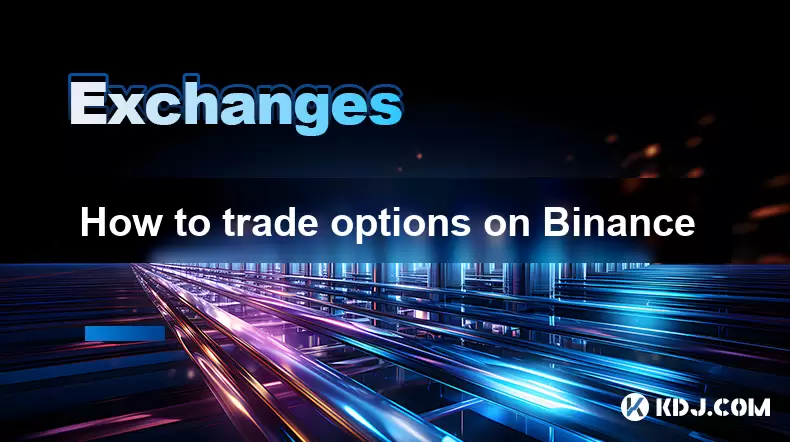
How to trade options on Binance
Jul 08,2025 at 04:35am
Understanding Options Trading on BinanceOptions trading allows investors to speculate on the future price of an asset without owning it. On Binance, users can trade crypto options, which are derivative contracts that give traders the right—but not the obligation—to buy or sell a cryptocurrency at a predetermined price before a specific date. This form o...
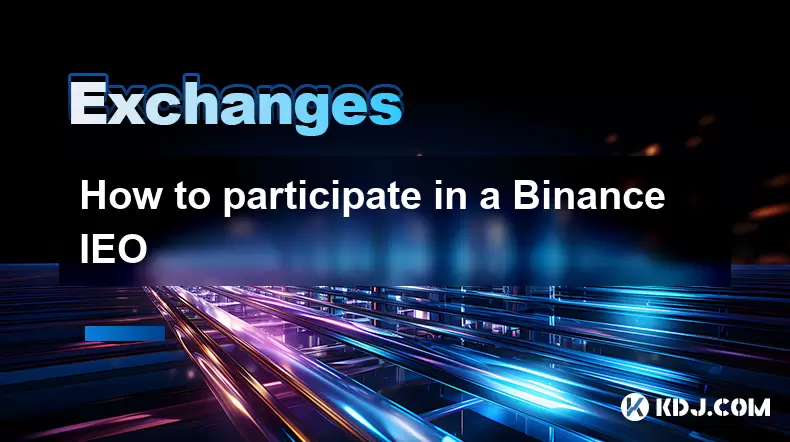
How to participate in a Binance IEO
Jul 08,2025 at 11:29am
What is a Binance IEO?A Binance IEO (Initial Exchange Offering) is a fundraising method where projects launch their tokens directly on the Binance platform. Unlike traditional ICOs, IEOs are conducted under the supervision of a centralized exchange like Binance, which adds a layer of credibility and security for investors. The process involves the excha...

Where is Kraken based?
Jul 08,2025 at 12:00pm
What is Kraken?Kraken is one of the most established and trusted cryptocurrency exchanges in the world. Founded in 2011, it has grown to become a go-to platform for traders seeking reliability, security, and advanced trading tools. The exchange supports a wide variety of cryptocurrencies, including Bitcoin (BTC), Ethereum (ETH), Litecoin (LTC), and many...

Why is my deposit to Coinbase still pending?
Jul 08,2025 at 11:14am
Understanding Pending Deposits on CoinbaseIf you've initiated a deposit to your Coinbase account and it's showing as pending, there could be several reasons behind this status. A pending deposit typically means that the transaction has been broadcasted or initiated but hasn't yet received enough confirmations from the blockchain network to be finalized....

Why is my Coinbase account restricted?
Jul 08,2025 at 11:01am
Account Verification and Identity RequirementsOne of the most common reasons a Coinbase account becomes restricted is due to incomplete or unverified identity information. Coinbase requires users to complete Know Your Customer (KYC) procedures, which include submitting government-issued identification documents, proof of address, and sometimes selfies f...

How to recover a lost Binance account
Jul 07,2025 at 09:07pm
What Happens When a Binance Account Is Lost?Losing access to your Binance account can be a distressing experience, especially if you hold significant digital assets. This typically occurs due to forgotten login credentials, loss of two-factor authentication (2FA) devices, or compromised accounts. Understanding the exact reason behind losing access is cr...

How to trade options on Binance
Jul 08,2025 at 04:35am
Understanding Options Trading on BinanceOptions trading allows investors to speculate on the future price of an asset without owning it. On Binance, users can trade crypto options, which are derivative contracts that give traders the right—but not the obligation—to buy or sell a cryptocurrency at a predetermined price before a specific date. This form o...

How to participate in a Binance IEO
Jul 08,2025 at 11:29am
What is a Binance IEO?A Binance IEO (Initial Exchange Offering) is a fundraising method where projects launch their tokens directly on the Binance platform. Unlike traditional ICOs, IEOs are conducted under the supervision of a centralized exchange like Binance, which adds a layer of credibility and security for investors. The process involves the excha...
See all articles

























































































